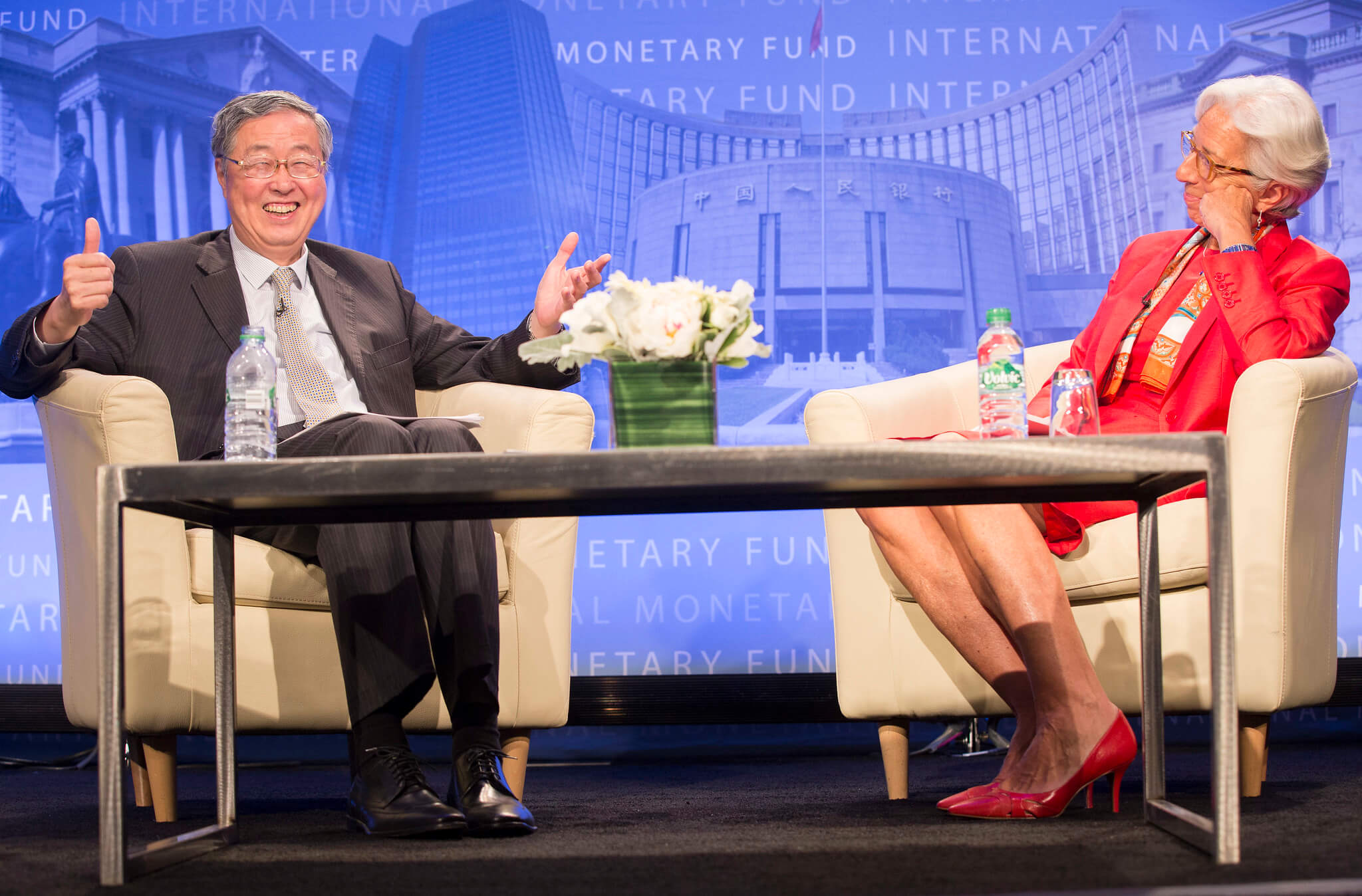
Monetary sovereignty: why the EU needs a digital euro
While other nations’ digital currencies are still in initial planning stages, China is at the forefront of monetary innovation with the launch of a digital yuan. Will it impact the United States’ control over the international payment system? And what are the geopolitical consequences of the EU not opting for a digital euro?
China will soon launch the nation-wide use of a digital yuan: the Digital Currency Electronic Payment (DC/EP). The Chinese government has been quietly developing its central bank digital currency (CBDC) over the past five years and is now at the forefront of monetary innovation, while other nations’ digital currencies are still in initial planning stages.
The introduction of a digital euro is currently on the agenda of the European Union. However, the EU has not yet decided whether or not to issue a digital euro. The European Central Bank (ECB) is currently in a preparation phase during which they are “developing the concept, conducting practical experimentation, listening to the views of the broader public and engaging with stakeholders”.1
China’s motives
Issuing CBDCs can be seen as a next step in the development of alternative payment systems. The necessity of developing an alternative payment system started for China2
(as well as for Iran3
, Russia4
and the EU5
) with dissatisfaction about the way the US has been using the international payment system SWIFT6
for its own geopolitical agenda.7

Cryptocurrencies offer a solution for countries that want to circumvent US sanctions, because when transferring cryptocurrencies, an independent and decentralised alternative to the SWIFT payment system is used. This is the exact reason why in 2018, Russia and Iran agreed to use cryptocurrencies for trade among each other; to avoid US dollar transactions.8
The Chinese government saw the writing on the wall and developed its own payment system
Having drawn inspiration from cryptocurrencies such as Bitcoin, Iran started developing its alternative payment system after the first US sanctions against the country in 2012.9 Russia followed and started developing its alternative payment system after the US sanctions in 2014.10
The Chinese government saw the writing on the wall and developed its own payment system, the Cross-border Inter-bank Payment System (CIPS), that was launched in 2015. In 2019, China, Russia and Iran agreed to connect their financial messaging systems to bypass SWIFT.11
India will likely join this cooperation too. However, India did not develop a domestic financial messaging standard at the time (and still not12 ) and agreed to work together with the Russian platform to further develop an Indian system that can connect to the other payment systems.13
A first motive for China’s embrace of a CBDC relates to protecting its currency sovereignty. The announcement of Facebook in June 2019 that it was about to launch its own digital currency with the name Libra, spurred the Chinese, Russian and Iranian governments to also develop their own digital currency, in addition to their alternative payment systems.

Before that announcement, their efforts to protect the currency sovereignty of their respective countries was directed at circumventing the use of SWIFT and the US dollar. However, as soon as the mighty tech company Facebook announced its plan to introduce a currency, the expected popularity of the Libra became another challenge for the currency sovereignty of China, Russia and Iran, as well as the EU.14
The Chinese government developed their digital currency to become the primary tool in BRI cross-border payments
A second motive for embracing a CBDC is to increase the efficiency of financial transactions between trading nations that do not involve the US. Nowadays, most international financial transactions are settled in dollars (the world’s reserve currency) or, to a lesser extent, in euros.
Chinese President Xi Jinping argued that the Eurasian region should become more economically competitive by promoting the exchange and settlement of local currency.15 He proposed the Belt and Road Initiative (BRI) intending to improve regional cooperation by – among other things – enhancing monetary circulation.
According to Mr Zhou Xiaochuan, governor of the People’s Bank of China, transacting in the currencies of countries along the BRI will gradually reduce dependence on major currencies and lower the risks of exchange rate fluctuations.16 Furthermore, Mr Zhou wrote in an article published in the central bank’s China Finance magazine that “increasing the use of local currencies will gradually enhance confidence and raise attractiveness of the local currencies”.17
At the time Xi Jinping made this proposal, in 2013, the solution was to sign local currency swap agreements with the countries along the BRI. Nowadays, digital currencies open new possibilities.
In December 2019, China signed a memorandum of understanding with many of the BRI countries (e.g. Indonesia, Uzbekistan, Singapore, and Kazakhstan) to formalise cooperation with the Chinese digital asset exchange Huobi to build the next generation of blockchain-based financial infrastructure.18 The Chinese government developed their digital currency, the DC/EP, to become the primary tool in BRI cross-border payments.19
A third motive is that a digital currency opens possibilities for strong central control of financial transactions. Digital money can easily be created or removed because it does not need to be printed and it does not exist physically. The implementation of negative interest rates would also be easy to execute.
The emergence of national digital currencies is a potential gamechanger with a huge impact on the geopolitical landscape
This creates a wide range of possibilities for monetary policy. A government could even opt for influencing the behaviour of its citizens by rewarding positive behaviour with instant extra digital money and punish bad behaviour with instant removal of digital money.

The EU and Chinese government face the same challenge: how to maximise control over monetary policy while keeping the CBDC attractive to potential users?
Geopolitical consequences for the US
The emergence of national digital currencies is a potential gamechanger with a huge impact on the geopolitical landscape. The system as we know it, in which the US has a high degree of control over international financial transactions, will become less important or in the very least be up for renegotiation. It is as if there will be a new layer added on top of the geopolitical map.
Previously, currencies used to be printed on the same paper, sent using the same payment system and were only distinguished by issuing country and central bank policy. On this new layer a novel digital element has been added to currencies that creates a broad range of new possibilities and a broad range of opportunities to compete.
This development takes currency from where it has been for hundreds of years into the realm of information technology networks and network effects – a locale usually reserved for social media or messaging platforms. The game then fundamentally changes to one where spheres of influence will be influenced by the old but also new, additional considerations such as pre-existing user groups (diaspora), functionality and interoperability.
An important functionality aspect that we should keep in mind is that China is not only ahead with developing a national digital currency, but also with developing a global blockchain-based service network (BSN). Although still in the design phase, the BSN plans to roll out a universal digital payment network within five years to support different countries’ CBDCs.
The aim is to develop a standardised digital currency transfer method and payment procedure. Integrations with a host of blockchain protocols are also underway.20 This Chinese BSN could potentially become the new SWIFT system in terms of its central role in future international financial transactions, based on its ability to deal with the complexity of international trade through conditional value transfers.21
How the story of a digital US dollar will unfold is anybody’s guess
The introduction of national digital currencies therefore opens up the traditionally by US dollar denominated and dominated international rules of the game to reinterpretation. How the story of a digital US dollar will unfold is anybody’s guess. On the one hand, some countries would explicitly like to wean themselves off US dollar and SWIFT dependence. On the other hand, not at the cost of being exempt from trade with the US by technological default.

What if the EU does not issue a digital euro?
This development towards CBDCs is already advanced. As the space becomes more competitive it also does not show any signs of slowing down. It is therefore important that the EU prepares itself for this new scenario.
In this new scenario it will be crucial to have a digital euro in order to ensure autonomy over the financial flows within the EU.22 Euro-countries will also benefit from more ‘monetary sovereignty’ relative to the US or any other country for that matter.23
The question is therefore not whether the ECB should issue a digital euro, but how the ECB will deploy the digital euro strategically.
The value of a currency does not solely depend on the value of a national market, but also on the functionalities of the currency and the trust users have in the currency. On the one hand, trust depends on the stability of the value of the currency, on the other hand, it is determined by transparency.
The fact that the ECB does not opt for a cryptocurrency regulated by a decentral blockchain system indicates that the ECB is interested in controlling the transactions. However, they should keep in mind that overreaching government control over a digital currency will arouse suspicion with potential users.
However, if the EU strikes a good balance between on the one hand, control over its financial policy, and on the other hand, a stable digital currency with high functionality, then the EU has the advantage of extending its stable image into the new global digital currency realm. This could enhance the international position of the euro.
Conclusion
The euro has become the second most traded currency, closely behind the US dollar. Part of the growing popularity of the euro is based on the fact that countries have been looking for alternatives to the US dollar in order to become less dependent on the US.24
The rise of digital currencies threatens this position that the EU has been seeking after.
It is important to develop a serious alternative that gives the EU financial autonomy
The EU should therefore adapt to the times and issue a digital euro, to protect its financial autonomy and to avoid that a rival digital currency (controlled by a non-European country or big tech company) becomes popular in Europe. Moreover, it should do so to maintain and increase the sphere of influence of the EU.

We should also keep in mind that China is not only ahead of us with developing a national digital currency, but also with developing a global BSN. Most of the bigger blockchain protocols like Ethereum – the blockchain protocol the Australian government would like to use for developing its national digital currency25 – have joined already.
The ECB would therefore be well advised to not only look at the monetary stability and functional aspects of the digital euro, but to also look into the broader network of consortium partners needed to make a success of the digital euro.
Now ‘strategic autonomy’ is on the agenda of the EU, it is important that we take a good look at the European dependence on the SWIFT payment system and the Chinese BSN. Consequently, it is important to develop a serious alternative that gives the EU financial autonomy, but not at the cost of impeding vital trade relations.
China is currently some steps ahead of us, therefore the question whether or not to issue a digital euro is too small of a step in the right direction.
- 1ECB, ‘A digital euro’, no date.
- 2Financial Times, ‘China launch of renminbi payments system reflects Swift spying concerns’, 7 October 2015.
- 3Central Bank of the Islamic Republic Iran, ‘Sepam’, no date.
- 4The Central Bank of the Russian Federation, ‘Financial messaging system of the Bank of Russia (SPFS)’, no date.
- 5Deutsche Welle, ‘INSTEX: Europe sets up transactions channel with Iran’, 31 January, 2019. In 2018, the German Minister of Foreign Affairs (Mr Heiko Maas) stated that ‘Europe should switch to its own payment system in order to circumvent the American sanctions against Iran and to safe the Iran Nuclear Agreement’ (Reuters, 21 August 2018). The blocking of Iranian banks by SWIFT is impeding trade relations of EU countries with Iran. (See for example Euronews, ‘Koffer mit 600.000 Euro: Trainer soll Geld im Iran bar abholen’, 11 June 2019.)
- 6SWIFT has long been the default global banking transfer mechanism. Launched in 1973 and based in Belgium, SWIFT is an international organization that is supposedly politically neutral. However, unofficially the US has a high degree of control over this system because all payments in American dollars are made through American banks and can therefore be blocked by the American government.
- 7For example, the US government has pressured SWIFT twice to block all transactions from and to Iran. First, in 2012, the ‘US pushed the European Union to force SWIFT to evict Iranian firms’ (Reuters, 18 February 2012). ‘SWIFT declares on its website’ (SWIFT, no date) that while the decision to disconnect Iranian banks is not in line with SWIFT’s policies, being incorporated under Belgian law it must comply with related EU regulation. However, in 2018 SWIFT succumbed again to pressure from the US to disconnect Iranian banks, while SWIFT was barred from doing so under the EU’s so-called blocking statute. This time, ‘the US government threatened SWIFT directly’ (Reuters, 5 November 2018) with sanctions if it did not comply with the US sanctions against Iran.
- 8RBC, ‘Иран и Россия могут начать использовать криптовалюты для обхода санкций [Iran, Russia May Start Using Cryptocurrencies To Bypass sanctions]’, 17 May 2018.
- 9The Iran Project, ‘Under sanctions, Iran replaces SWIFT with indigenous version’, 19 October 2013.
- 10The Russian Federation, ‘О внесении изменений в Федеральный закон "О национальной платежной системе" и отдельные законодательные акты Российской’ [Amendments to the Federal Law "On the national payment system" and individual legislative acts of the Russian Federation], 29 April 2014.
- 11Global Times, ‘Payments linkage by China, Russia and India can challenge SWIFT hegemony’, 29 October 2019.
- 12Reserve Bank of India, ‘Payment and Settlement Systems in India’, 1 January 2021, p. 24.
- 13Economic Times, ‘India-Russia-China explore alternative to SWIFT payment mechanism’, 14 November 2019.
- 14Deutsche Welle, ‘European leaders step in to block Facebook's digital currency’, 19 October 2019.
- 15Ministry of Foreign Affairs of the PRC, ‘President Xi Jinping Delivers Important Speech and Proposes to Build a Silk Road Economic Belt with Central Asian Countries’, 7 September 2013.
- 16Reuters, ‘Use local currencies in China's Silk Road initiative for financial stability - central bank officials’, 11 May 2017.
- 17See footnote 14.
- 18Technode, ‘China strengthens blockchain cooperation with BRI countries’, 5 December 2019.
- 19The DC/EP is likely to become popular in Africa. Chinese companies have applied their ‘understanding of African digital payment systems’ (Coindesk, 3 February 2021) to develop a smart functionality with a roll-out of China’s National Digital Currency in mind. Mobile payments accounted in 2019 for almost 10% of Sub-Saharan Africa’s GDP, making sub-Saharan Africa ‘the number one region in mobile payments’ (Risk Magazine, 14 October 2019). Since China is the first country issuing a CBDC and has about 60% of the smartphone market share in Africa it has the means to rapidly distribute the DC/EP on the African continent.
- 20Coindesk, ‘China’s blockchain-based service network to integrate central bank digital currency’, 17 January 2021.
- 21One of the most interesting applications of blockchain technology is called smart contracts. In the most basic form smart contracts can be seen as self-enforcing financial contracts. Smart contracts are able to monitor for these circumstances and carry out the transfer of financial assets without the need for any human intervention. If certain technical issues are addressed smart contracts have the ability to transform financial processes such as trade finance. A currency which would have smart contract functionality would therefore have a major advantage in comparison to other more conventional currencies.
- 22ECB, ‘Report on a digital euro’, October 2020.
- 23Reuters, ‘France, Germany blast Facebook's Libra, back public cryptocurrency’, 13 September 2019; DW, ‘Germany urges SWIFT end to US payments dominance’, 27 Augustus 2018.
- 24ECB, ‘The international role of the euro’, June 2019.
- 25Reserve Bank of Australia, ‘Reserve Bank partners with Commonwealth Bank, National Australia Bank, Perpetual and ConsenSys Software on Wholesale Central Bank Digital Currency Research Project’, 2 November 2020.









0 Comments
Add new comment